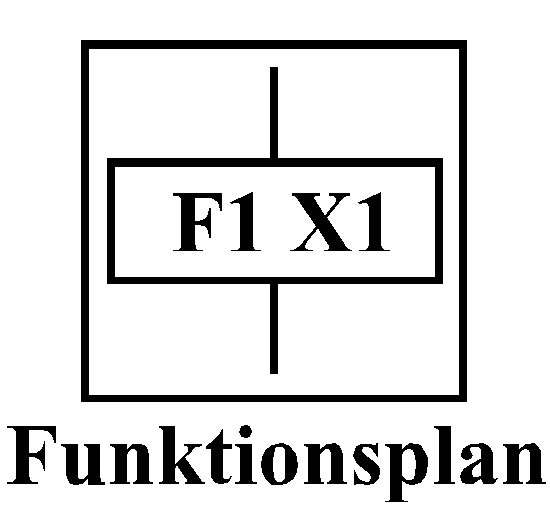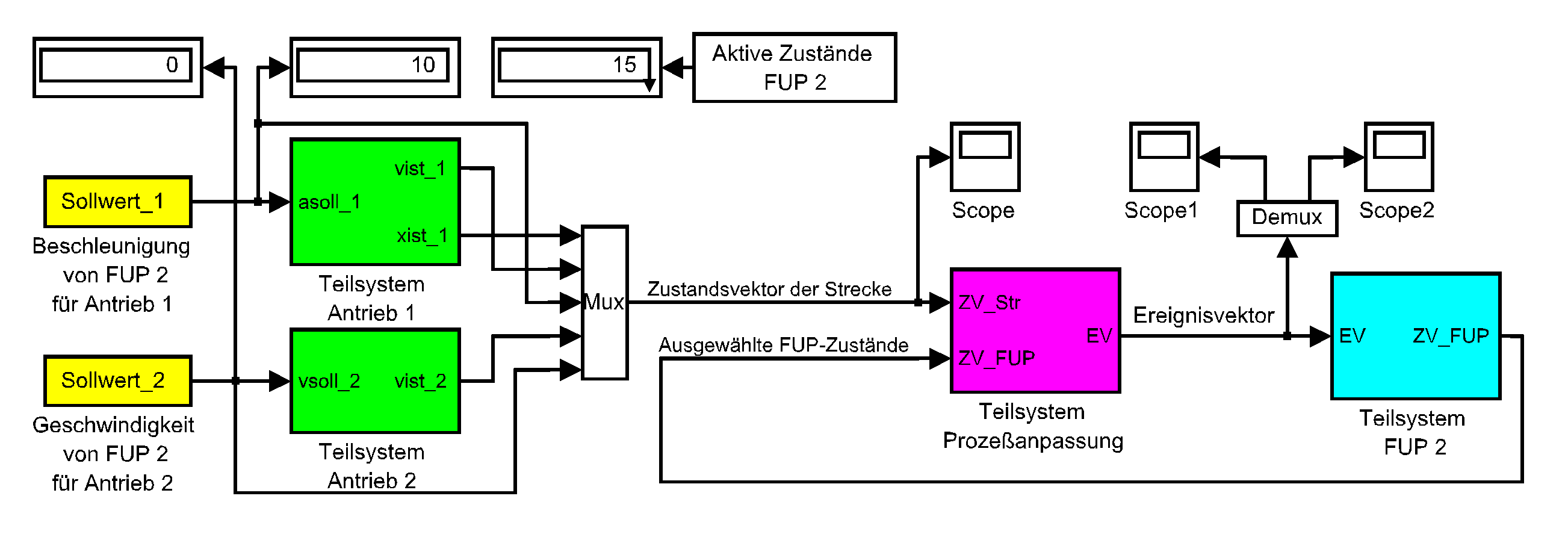

|
Application of the add-on block library
Function Chart |

(sensitive)
Dynamic test with two axes of motion according to figure 3 and 4 of the VDI/VDE guide line 3684. The following motion sequence is required:
| 1. state | - start delay time or for several cycles: - stop drive 2 - waiting time for drive 1 |
| 2. state | - acceleration of drive 1 in direction 1 |
| 3. state | - start of drive 2 in
direction 1 - constant speed of drive 1 |
| 4. state | - braking of drive 1 to speed zero |
| 5. state | - stop drive 2 - waiting time drive 1 |
| 6. state | - acceleration of drive 1 in direction 2 |
| 7. state | - start of drive 2 in
direction 2 - constant speed of drive 1 |
| 8. state | - braking of drive 1 to speed zero |